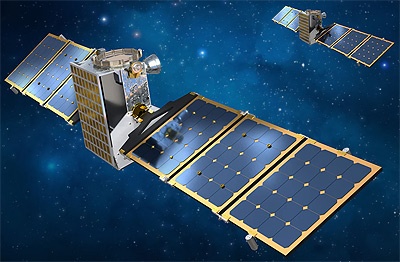Space is big, really big! Finding new asteroids which are usually dark against the inky blackness of space is harder than looking for a needle in a cosmic haystack. Back in 1991 an astronomer discovered a kilometre wide asteroid which was subsequently found to have a smaller moon half its size. It was given the snappy name of 1991 VH which , after follow up observations was revealed to have a tumbling, chaotic rotation. This was the first binary asteroid that has been seen to exhibit this behaviour. A paper just published suggests that a close encounter with Earth as recently as 12,000 years ago could have started its tumbling motion.
Continue reading “This Binary Asteroid is Messed Up. It’s Probably Earth’s Fault”NASA’s Janus Mission is Going to Visit Two Binary Asteroids
Gravity is good for a lot of things. It brings objects closer together. Occasionally they crash into each other. But sometimes two objects get locked in a unique gravitational dance that pairs them together. That dance can be short-lived, or it can last for billions of years. In some cases the objects are large (i.e. planets and moons), but they can also be quite small.
These small dancing objects are called binary asteroids, and we know very little about them, despite making up approximately 15% of all asteroids in the solar system. That is until a newly greenlighted NASA mission, called Janus, will arrive at two different binary asteroids around 2026.
Continue reading “NASA’s Janus Mission is Going to Visit Two Binary Asteroids”

